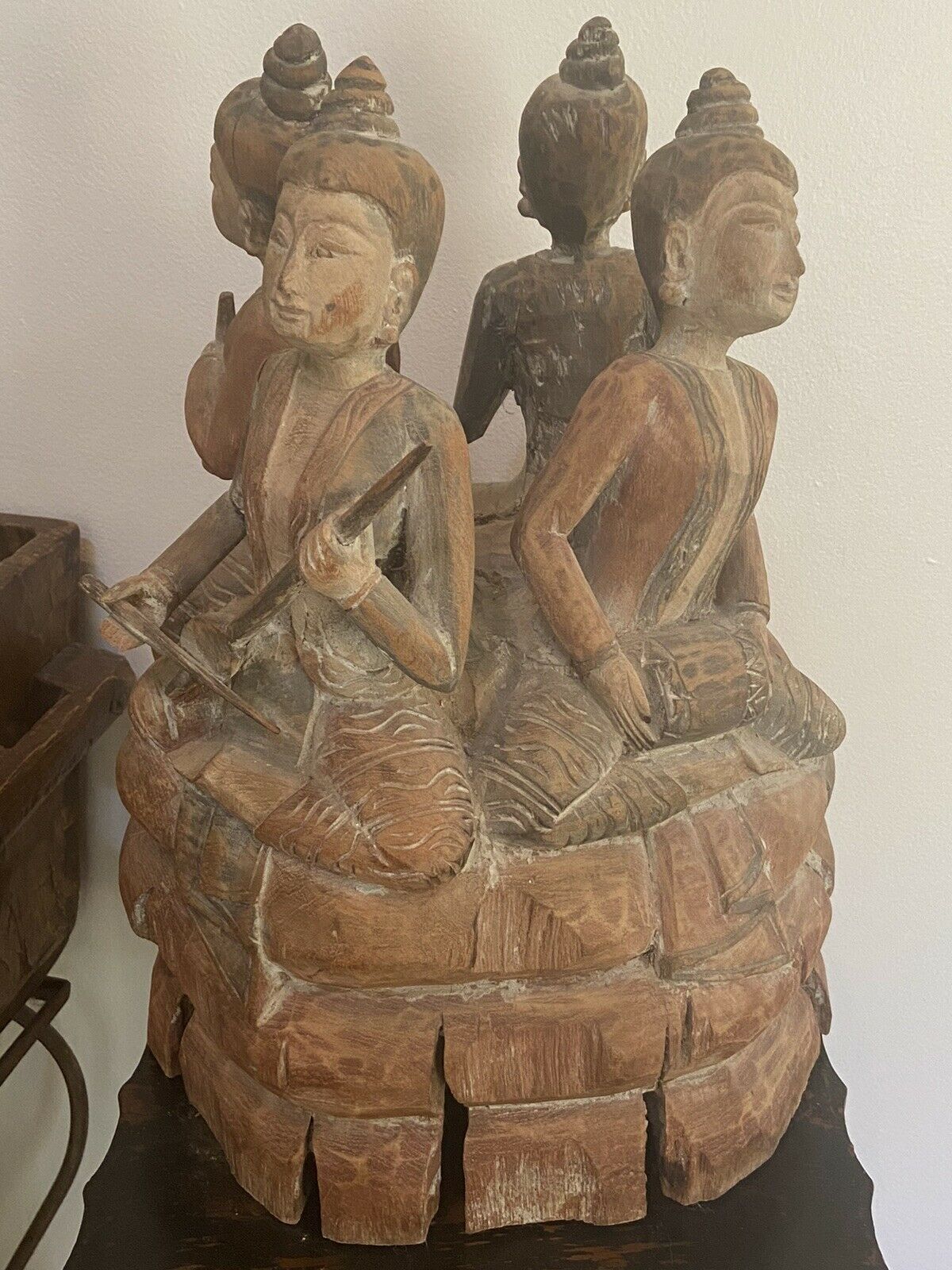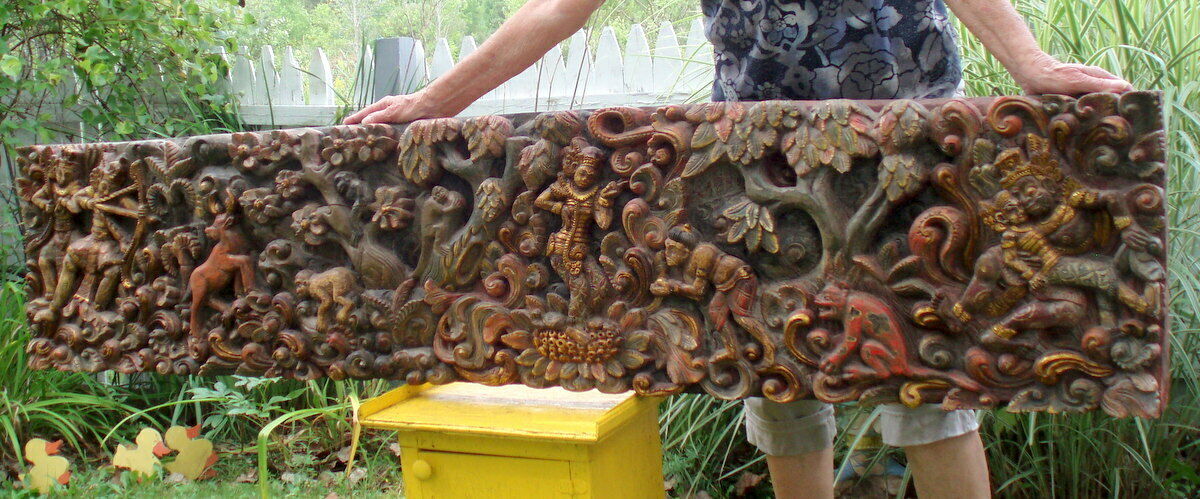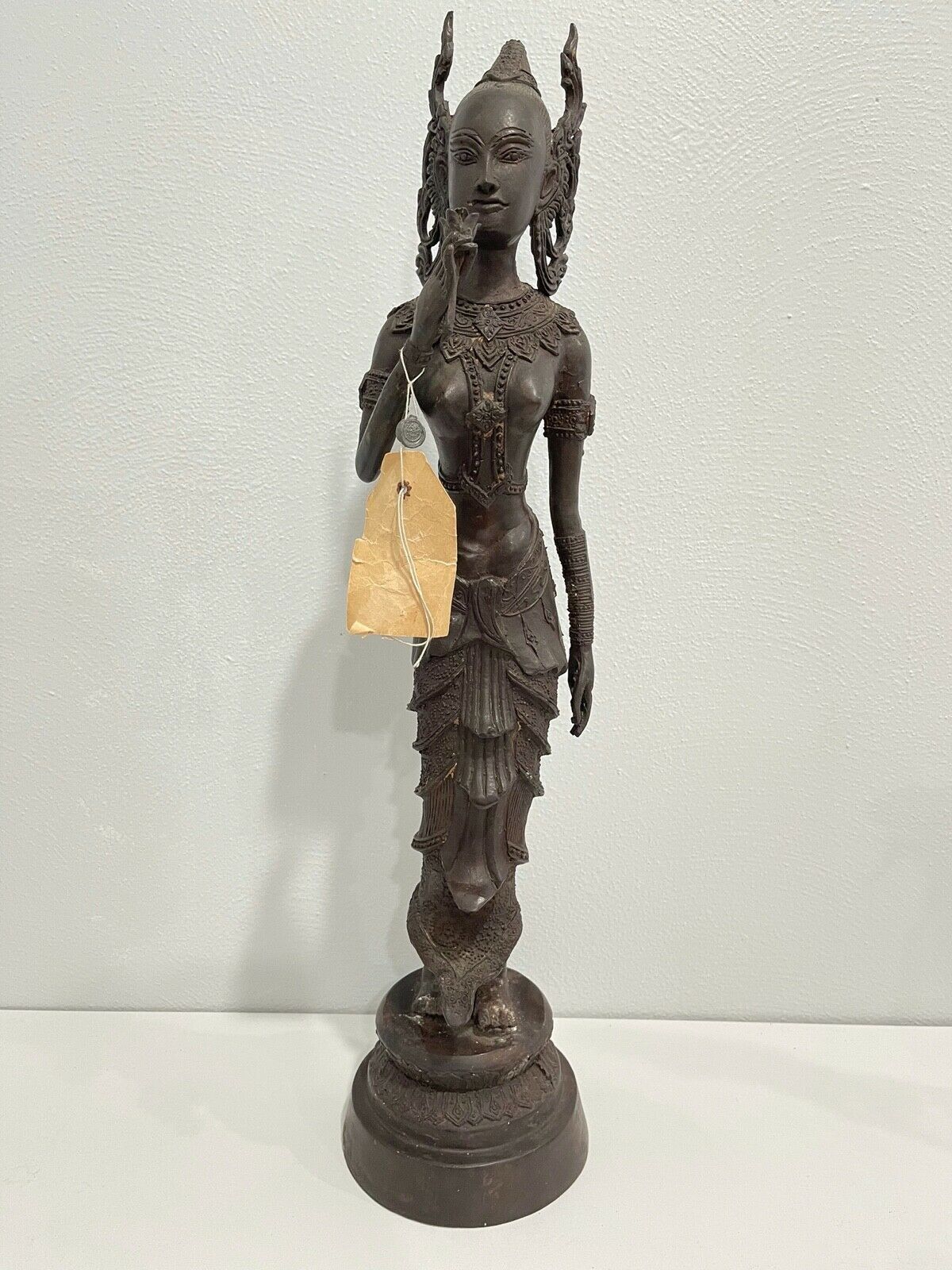-40%
Large Khmer Buddha sheltered by the Naga Muchalinda, 12/13th Century
$ 5016
- Description
- Size Guide
Description
Khmer Buddha sheltered by the Naga Muchalinda, 12/13th CenturyDimensions: approximately 39 inches high without the stand, 42 inches with the museum quality stand and 14 inches wide.
Condition: no cracks or repairs, in great condition considering its age.
This sculpture appears to have been created in the late Angkor Wat or early Bayon period (1177–1230) when, under the leadership of King Jayavarman VII, Buddhism again came to prominence in Cambodia. The veneration and elevation of the Naga-enthroned Buddha emerged as the apex of Khmer imperial Buddhism and was unique to the Khmer culture. Although Hinduism was the dominant religion during the Angkor Wat period, images of the naga serpent king Muchalinda sheltering the Buddha were popular in Khmer art throughout the twelfth century.
In a Cambodian legend, the Naga were a reptilian race of beings that possessed a large empire or kingdom in the Pacific Ocean region. The Naga King's daughter married the king of Ancient Cambodia, and thus gave rise to the Cambodian people.
This sculpture derives from the episode in the life of Shakyamuni, the historical Buddha, when Muchalinda coiled his body beneath the meditating Buddha and fanned out his hood to protect him from a storm. Seated beneath the canopy of serpent’s hoods, with hands in a gesture of meditation (Dhyana Mudra) palms facing upward with the right hand over the left, the Buddha wears a slight smile and an expression of compassionate serenity.
The serpent is marked with symbols of the wheel of law, representing the endless cycle of birth, death and rebirth (samsara); the wheel also alludes to the teachings of the Buddha as a path to enlightenment and release from this cycle.
There are traces of yellow and green paint; these are from a later period when the Cambodians were known to paint ancient sculptures often in bright colors. At the base of the sculpture is a partially intact tenon that would have fit into a mortise located in a prominent place in the Khmer temple securing its position.
This authentic Khmer sculpture is from my personal collection.
I purchased this sculpture around 1990 from a reputable antique dealer in Bangkok, Thailand and it has been in my possession since then. I was in charge of the international sales for a company in the 1980’s and 1990’s and I spent a great deal of time in Asia and got to know the owner of the antique store. He had a direct connection with military generals in Cambodia who had a warehouse full of original sculptures and sold them to the dealer when they needed to supplement their income. In the early 1990’s casino gambling became legal in Cambodia. The casinos allowed the generals to have an alternative secondary source of income that was better and more stable, which ended the supply to the antique dealer. A photo of the antique dealer's shop is attached.
A completed letter, similar to the one attached in the photos, will be included with the purchase.
This is a large and heavy sculpture and will be packed and crated to insure it is safely transported to its new home.




















